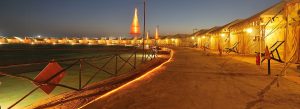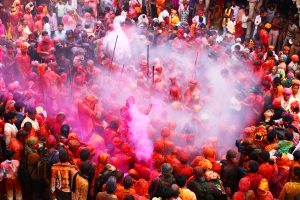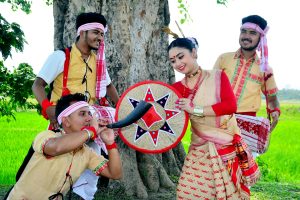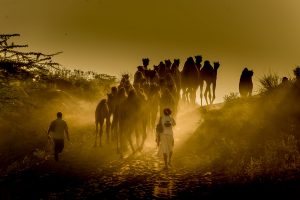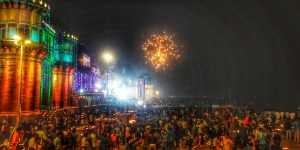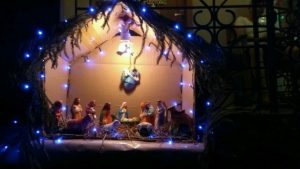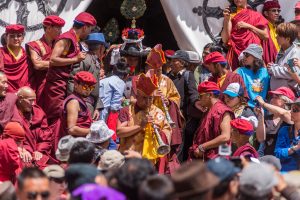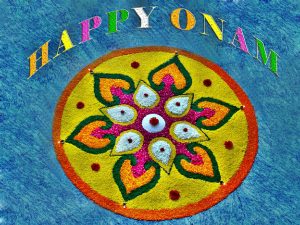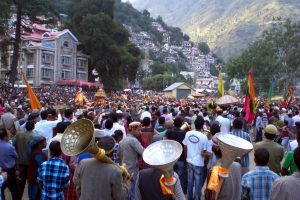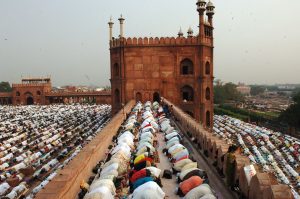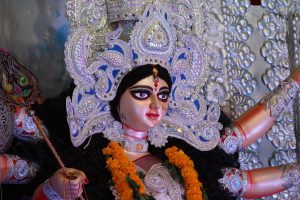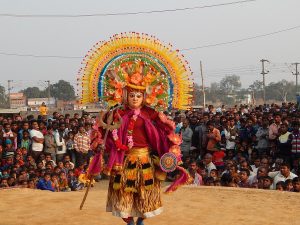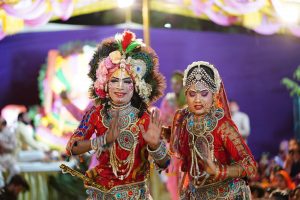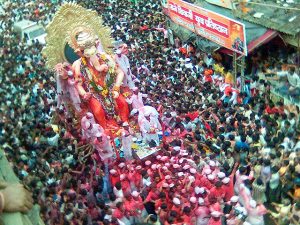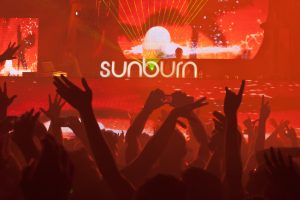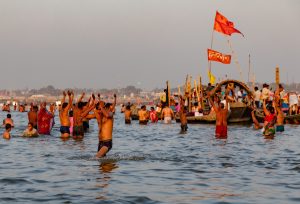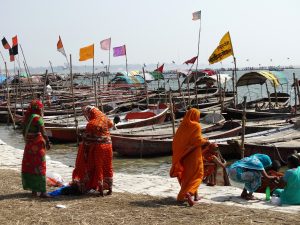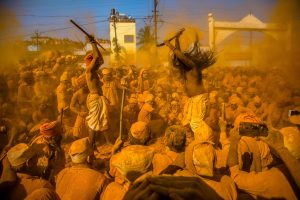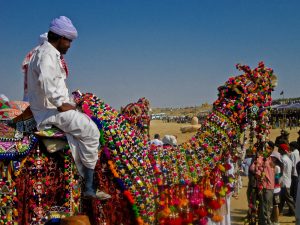20 Festivals In India Which Are A Photographer’s Delight
India is known for its festivals that showcase the country’s traditions and culture, in addition to its magnificent monuments, highest mountain ranges, beautiful beaches and islands, and delectable cuisine. India is perhaps the best country in the world for travellers to experience the spirit of celebrations mixed with a mix of cultures. These spectacular events, which take place throughout the year, provide visitors with the opportunity to capture the best celebrations moments on camera at their best. Have a blast! Here is a list of some of the most popular festivals in India that every photographer should attend:
1. Rann of Kutch Utsav
The Rann Utsav, one of the most unique cultural festivals in India, takes place in Gujarat from late winter to early February. The best time to visit here is on a full moon night to enjoy the region’s splendours. The festival depicts Gujarat’s vibrant culture through a variety of art and crafts from the region, and folk artists from various parts of the region enthral the audience with their performances.
The Rann Utsav is a shopper’s paradise, with intricate Kutchi embroidered items, beautiful block-printed fabric, stunning silver jewellery, and leather accessories all available for purchase. You can go on a hot air balloon ride, a fun solo ride, or a camel ride if you are an adventure seeker.
2. Holi: Vrindavan-Mathura
Source: Wikimedia Commons
The atmosphere in the colourful festivals in India of Holi is like Pandora’s box of wholesome fun and good-natured pranks. This festival is slowly gaining traction on a global scale. Holi is a festival in which people throw and apply colourful powders on each other in a variety of vibrant hues. Water guns and water balloons are used as friendly weapons to throw and splash water on each other during the festival. Let the pinks, greens, and reds of Holi wash over you and wash away your worries for the day.
However, if you want to experience traditional Holi, go to Vrindavan, Mathura, or Braj Bhumi. Holi attracts visitors from all over the world to Vrindavan, Mathura, and Barsana. It is, after all, a grand occasion. Despite the fact that Holi has a set date, the festivities begin on Basant Panchami and last until the day of Holi (Phalgun Purnima). We recommend arriving a few days before Holi and staying beyond that date to get the most out of the festival. During Holi, of course, the photographers will have a field day. There will be a lot of red, yellow, and orange.
Lathmar Holi
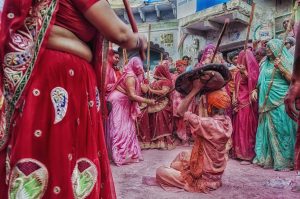
Source: Wikimedia Commons
Lathmar Holi is celebrated 4-5 days before other states’ Holi celebrations. However, it’s interesting to see how this festival is observed in the towns of Nandgaon and Barsana in Uttar Pradesh’s Mathura district. The towns are about 42 kilometres from Mathura and are well-known for their Holi celebrations.
The locals are known for their unique approach to Holi, which involves not only colours but also sticks. Lathmar Holi is a Hindi word that literally means “stick and beat” and refers to playing Holi with a stick and colours. Holi and Thandai (a sweet drink) go hand in hand, so don’t miss out!
Phoolwalon ki Holi
Have you ever participated in Holi festivals in India with colourful flowers? This is your opportunity to do so! On this day, Ekadasi, Holi is played in the petals of colourful flowers at the Banke Bihari Temple in Vrindavan. The temple gates open at 4 p.m., and the priests shower the devotees with colourful petals. The entire event lasts 30 minutes. So arrive early when the gates open!
3. Bihu
Source: Wikimedia Commons
Assam is a stunning landscape with enticing traditions, lovely tea gardens, blue mountains, and famous wildlife. The Assamese people celebrate the Bihu festival three times during the year, each time in a different season. The festival reflects the Assamese culture’s lifestyle and many ancient rituals.
All three Bihu have different meanings and are observed according to the farming calendar. “Bhogali Bihu” is the first Bihu, which is celebrated in January. The second and most important Bihu is known as “Rongali Bihu.” During the harvest festival in April, the locals perform folk dance, musical and cultural activities, and follow holy rituals in order to bring peace, harmony, and happiness to the community. “Kati Bihu” is the name given to Bihu, which is celebrated for the third time. This is for the purpose of preserving crops and vegetation. The essence of the spring season is what Bihu is all about.
4. Pushkar Camel Festival
Source: Flickr
If you want to see the fascinating Camel Fair, make a trip to Pushkar in Rajasthan, which transforms into a magical land of royalty every year when the festival takes place. Although it is only one of Rajasthan’s many camel festivals in India, it attracts a large number of tourists and photographers each year. The Kartik Purnima falls on the same day as this fair (full moon).
The camel race, matkaphod contest, and the bridal and moustache competition was originally organised to attract local camel traders and promote business exchange, but today, the festival’s highlights are the camel race, matkaphod contest, bridal and moustache competition, which completely entertain the travellers.
5. Dev Deepawali: Varanasi
Source: Wikimedia Commons
Every year in the holy city of Varanasi, Dev Deepawali, also known as Dev Diwali, commemorates Lord Shiva’s victory over the demon Tripurasur and occurs after the 15-day festival of Diwali. As a result, the festival is also known as Tripurotsav and is celebrated on Kartik Purnima Day (the full moon day for the Hindus).
A large number of devotees pray to Goddess Ganga on this auspicious day, offering flowers and lighting clay lamps or diyas in the evening. Deepdaan is the act of lighting lamps and offering them to the Ganga. As the sun sets, thousands of diyas twinkle on every step of the Varanasi ghats staircases, creating a stunning display.
Also read: 15 Interesting Facts About Varanasi That You Need to Know
6. Christmas: Northeast Region
Source: Wikimedia Commons
In India, the birth of Jesus Christ is commemorated with ecstatic merriment and wonderful joy. Every household can inhale the warm aroma of walnut cakes. Christmas sees confetti of Santa caps and reindeer headgear adorning the heads of civilians as if enthralled by a confetti of Santa caps. Many people use colourful stars and hanging balls to decorate their Christmas trees at home. On this auspicious festival, people also visit the Church to seek the holy blessings of Christ. Furthermore, the significant Christian population in India’s remote northeast region (visit Shillong in Meghalaya, Kohima in Nagaland, or Aizwal in Mizoram), as well as other south Indian cities such as Bangalore and Chennai, celebrates Christmas.
7. Hemis Festival: Ladakh
Source: Flickr
As the people of Ladakh are filled with a refreshing zeal to celebrate their grandest fiesta known as “Hemis festival,” observe the valleys, mountains, and rivers thriving on the beats of drums, cymbals, and trumpets. Every year on the Guru Padmasambhava’s birth anniversary, followers offer prayers, seeking blessings of a portrait of the Guru Padmasambhava in Hemis Monastery.
A joyful occasion begins in June with the performance of Cham dance or Mask dance, as well as musicians playing music while the ceremony is taking place. The Hemis Monastery Festival looks so promising that it draws tourists from all over the world to Leh every year to witness the most spectacular display of Tibetan culture in India, with people dressed in their finest traditional garb.
8. Onam: Kerala
Onam is one of the harvest festivals in India that is celebrated every year, with its origins in the Kerala state. With a ten-day celebration, the people of Kerala come together to celebrate the harvest. The best time to visit God’s own country is between August and September when the landscape is lush green after the monsoon, the lakes and lagoons are flowing beautifully, and houseboat tours are available.
Locals don new clothes and participate in a variety of energetic and fun-filled activities, such as the snake boat race, in which hundreds of people are painted and dressed as tigers to perform the Pulikali dance to traditional music, and homes are colourfully decorated with floral carpets and a grand feast is prepared. Definitely, a sight to behold!
9. Kullu Dussehra
Source: Wikimedia Commons
The Kullu Dussehra, a week-long festival commemorating the death of the demon Ravana at the hands of Lord Rama in the Hindu epic Ramayana, is a significant event in the lives of the locals. The Kullu Dussehra, also known as the International Mega Dussehra, attracts over 4 lakh people to Kullu, Himachal Pradesh, to celebrate one of the iconic festivals in India that commemorates the triumph of good over evil.
On the first day of the Festival, a huge statue of the deity is now installed on a beautifully designed chariot, in the presence of other village gods and goddesses, according to tradition. After offering their prayers and respects to the deity, devotees transport him to various locations throughout the Dhalpur Maidan.
The days that follow are marked by great devotion and a variety of song and dance performances. Huge feasts are held, as well as a culturally rich Kala Kendra Festival, which adds to the festival’s merriment. These vibrant cultural activities attract large crowds and provide an opportunity to witness the power of faith and community in the mighty Himalayas.
The festival concludes with the sacrifice of a fish, crab, rooster, buffalo, and lamb, followed by the lighting of a massive bonfire. The festivities come to a close with a bonfire, which symbolises the burning of Lanka, and a grand procession returns Lord Raghunath’s idol to its original position.
10. Eid-Ul-Fitr: Delhi
Source: Flickr
In India, Eid-ul-Fitr is one of the major Muslim festivals in India. People visit the mosque for an auspicious prayer, dress up in new clothes, and prepare delicacies like sewainyan to eat during the festival. Idi, a small token of money, is given to children as a gift, and relatives exchange sweets and gifts. It is a festival that honours humanity’s brotherhood. Delhi celebrates Eid with zeal and fervour. People will gather in this city to pray at the Jama Masjid, one of India’s most famous mosques.
11.
Durga Puja, a festival honouring the powerful Goddess Durga, is a major Bengali festival in India. The festival is marked by the decoration of the massive pandals in the centre of which sits a heavily decorated idol of Goddess Durga. There is a lot of dancing, singing, and good fun at the festival. Durga Puja celebrations in Kolkata are a must-see; it’s a once-in-a-lifetime opportunity to witness a festival at its most vibrant.
12. Chhau Dance: East India
Source: Wikimedia Commons
The Chhau dance is one of the popular tribal festivals in East India, specifically in the states of West Bengal, Jharkhand, and Odisha. Masks are worn by the Purulia Chhau of West Bengal and the Seraikela Chhau of Jharkand while dancing, but the Mayurbhanj Chhau of Odisha does not. The mythological epics – Ramayana and Mahabharat – are depicted in this century-old form of dance. The traditional dance is performed in open spaces with Dhol, Dhamsa, and Shehnai accompaniment.
Chhau is mostly performed to honour Lord Shiva during the Gajan festival and other Shaivite festivals. Purulia Chhau masks, which can be found in Charida, are very popular. Purulia is known for its exquisite artwork.
13. Janmashtami: Mathura and Vrindavan
The birthday of Lord Krishna, a revered Hindu God, is celebrated as Janmashtmi in North India. The main festivals in India, however, take place in Vrindavan and Mathura, where Krishna was born. The temples are packed with devotees who have fasted on this auspicious day and are waiting for the temple priest to reveal the Krishna idol at the precise time of his birth. In other parts of the country, the festival is being celebrated with zeal, with local community programmes dedicated to the life stories of Krishna, which are depicted in an artistic manner.
14. Ganesh Chaturthi: Mumbai
Source: Wikimedia Commons
The festival of Ganesh Chaturthi is a culturally charged environment that is prominently celebrated in the state of Maharashtra. The festival lasts for ten days, with the final day being the most exciting. Huge Ganesha idols are carried to the seashore for the Visarjan procession, which involves immersing the idol in the water. There is a lot of dancing and singing on the walk from one’s house to the beach.
15. Sunburn Festival: Goa
Source: Wikimedia Commons
If you are a true music fan, the Sunburn Festival in Goa is one of the perfect winter festivals in India for you. Witnessing one of the world’s top electronic dance-music festivals in an exciting place like Goa is a once-in-a-lifetime experience for all lovers of music, travel, and culture.
16. Hornbill Festival: Nagaland
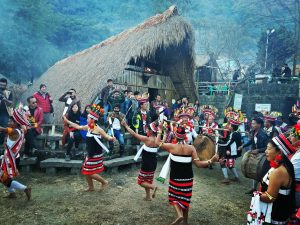
Source: Wikimedia Commons
The Hornbill Festival, also known as the “Festival of All Festivals,” is a grand celebration held each year in Nagaland, North East India. Through splendid traditional music, dance, and performances, the festival is gritting in its element and a powerful representation of Naga culture. The performances are likely to be very eye-catching and draw a lot of attention. All of Nagaland’s diverse tribes contribute their heartfelt efforts to make the festival more vibrant and entertaining. To make this celebration an extraordinary possibility, everyone comes together under one wing. People from all over the world travel to this exciting event to either observe or participate, or sometimes both.
17. Kumbh Mela
Source: Wikimedia Commons
In Hinduism, the Kumbh Mela (or Kumbha Mela) is a major pilgrimage and festival. It is commemorated at four river-bank pilgrimage sites: Allahabad, Haridwar (Ganges), Nashik (Godavari), and Ujjain, in a 12-year cycle to commemorate every revolution Brihaspati (Jupiter) completes (Shipra). The festival is marked by a ritual dip in the waters, but it is also a celebration of community commerce, with numerous fairs, education, religious discourses by saints, mass feedings of monks or the poor, and a spectacle of entertainment. Bathing in these rivers, the seekers believe, is a form of pryacitta (atonement, penance) for past mistakes, and that it cleanses them of their sins.
18. Magh Mela
Source: Wikimedia Commons
Magh Mela, also spelt Magha Mela, is next on the list of annual festivals in India, with fairs held near river banks and sacred tanks near Hindu temples in the month of Magha (January/February). Magha melas, such as the one in Allahabad, occur every twelve years and coincide with what the faithful believe to be an astrologically auspicious position of Jupiter, sun, and moon (officially, Prayagraj). The Mahamaham tank in Kumbhakonam hosts a notable festival in the south, while Sagar Island in West Bengal and Konark, Puri host festivals in the east. The Hindu community in Bali, Indonesia, also celebrates the Magha festival, which includes bathing rituals as a form of penance.
19. Vitthal Birdev Yatra
One of the strangest and least-known festivals in India commemorates the birth anniversary of Vitthal Birdev Maharaj, a reincarnation of Lord Vishnu and the community’s Deity of the Shepherds. The shepherd community from Andhra Pradesh, Karnataka, and Maharashtra gathers here to partake in the craziness of Turmeric powder celebrations.
The forecasts by Shree Kheloba Rajabhau Waghmode, also known as the ‘Baba’ of the devotees, who walks 17 days from his village to Pattan Kadoli for the festival, are the most important ceremony. To welcome the Baba, huge traditionally decorated umbrellas are brought in, and a procession with drums and traditional music follows. They march to the open area where the celebration takes place after the darshan. The modes of celebration include drumming, spinning huge umbrellas, singing folk songs, dancing, and acrobatics. This is what makes this festival one of the breathtaking festivals in India for a photographer.
The holy sword is given to Baba after a few rituals. It is said that God descends into him, and his sword performance mesmerises his devotees. The entire congregation then returns to the temple. Baba’s forecasts are the most important ceremony of this fare. Every year, he makes predictions about the climate, crops, business, and health for the coming year, which has proven to be extremely beneficial to farmers.
20. Jaisalmer Desert Festival
Source: Flickr
The Jaisalmer Desert Festival is an annual event held in the beautiful city of Jaisalmer in the month of February. It takes place three days before the full moon in the Hindu month of Magh (February). The festival is held in the Sam dunes, which are located in the Thar Desert (42 kilometres from Jaisalmer). The location comes to life during the three-day extravaganza of desert delights, which is romantic, remote, and unspoiled.
Celebrate the various hues of India through the prism of festivals, each of which should be celebrated with zeal and jubilation! Now is the time to pack your bags, turn up the music, and reserve your plane tickets to one of your favourite festivals in India. Hurry!


